- Abteilungen
- HGF MPG Brückengruppe für Tiefsee-Ökologie und -Technologie
- Ehemalige Gastwissenschaftler
Ehemalige Gastwissenschaftler
Bengtsson, Mia
PhD Student, University of Bergen, July 2007
I am a PhD student at the University of Bergen in Norway. I work with procaryotes associated to the seaweed Laminaria hyperborea along the Norwegian coast using culture independent methods. During my visit in Bremen in July 2007 I aim to adapt the CARD-FISH method to visualize bacteria on the surface of seaweeds in collaboration with Friederike Hoffmann.
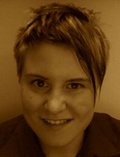
Braeckman, Ulrike
Scientist, Ghent University, 2013 - 2015
Project: Bioturbation and biogeochemical functioning in polar marine ecosystems
In this era of rapid changes to marine ecosystems, polar marine ecosystems are particularly experiencing strong modifications, because of their sensitivity to sea surface warming and sea ice retreat. Alterations in the pelagic ecosystem are already notable, and these changes will most likely trickle down to the bentho-pelagic coupling, often crucial for food input and nutrient cycling at the sea floor. However, the effects of these pelagic changes on bentho-pelagic coupling and biogeochemistry and biodiversity at the sea floor in Polar Regions remain largely unknown. In this project, we aim to investigate the influence of rapidly changing environmental conditions on bioturbation and biogeochemistry in polar marine ecosystems. Since the effects will be system-specific, two very contrasting ecosystems are targeted: a deep-sea Arctic (Fram Strait) and a coastal Antarctic site (Potter Cove, Western Antarctic Peninsula).
At both the Arctic and Antarctic site, we will perform both in situ and ex situ measurements of carbon mineralization (oxygen consumption and nutrient fluxes along with sediment microprofiling of oxygen and other variables). These measurements will be related to the bioturbation potential of the macrofauna communities at each site.
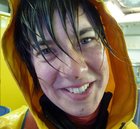
Carney, Erin
Graduated student (bachelor), Research Center for Ocean Margins, July - August 2005
Through the support of the Research Center for Ocean Margins (RCOM) Summer Student Fellowship program, I spent two months at the Max Planck Institute working in the Habitat group of Antje Boetius. Under the advisement of Tina Treude, my research examined the sediment ecology at a deep-sea whale fall site off the coast of California. I measured in situ and enrichment bacterial counts as well as sulfate reduction and methanogenesis. I recently graduated from Bowdoin College in Brunswick, Maine where I
specialized in Biology with an emphasis on genetics. Next, I am headed to Boston to work as a laboratory technician in a breast cancer research lab at Massachusetts General Hospital.
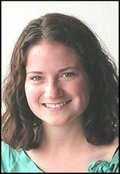
Colak, Tugba
Master Student, University Bremen, 2005-2006
When I was a senior student at Jacobs University Bremen (2005-2006), I had an internship in Prof. Dr Antje Boetius’ Lab under the guidance of Dr. Alban Ramette. Our focus was to optimize the ARISA (automated ribosomal intergenic spacer analysis) protocol by comparing some of the parameters used in the protocol. ARISA is a culture independent method that allows rapid, easy and precise investigation of microbial diversity at the intraspecific level. Along with testing the ARISA parameters, we also investigated the reproducibility of the results and the capability of ARISA in detecting the similarities between bacterial communities from different samples. This hands-on research experience at the MPI stimulated my interest in microbiology further and I decided to continue working with microbes post college graduation. Currently I am doing my master’s in biology at University of San Francisco in Prof. Dr Juliet V. Spencer’s lab and my master’s project is about immunomodulation by rhesus cytomegalovirus.
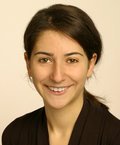
Fortunato, Sofia
Master Student, University of Bergen, January 2008
I am a master student at the University of Bergen in Norway. The aim of my thesis is to describe the associated microbes involved in the sulfur cycle of the cold-water sponge Geodia barretti. I am using culture-independent methods as DGGE, 16SrRNA sequencing and functional gene analysis. During my visit in Bremen, I aim to develop specific oligonucleotide probes for my target microbes and apply them on sponge tissue sections (FISH and Clone-FISH).
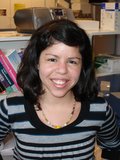
Graf, Franziska
Undergraduate Student, Jacobs University, January 2007
Majoring in Biochemistry and Cell Biology, I joined the Habitat group for one of my guided research laboratory rotations in January 2007. Under the supervision of Dr. Alban Ramette I worked on the purification of microbial DNA from deep sea sediment samples. The aim of the project was to improve the yield and further minimize the contamination of the DNA extracts. I learned new PCR techniques and got to experience what marine molecular ecology work is like. I did not have any previous lab exposure to marine microbiology, making this work particularly interesting for me.
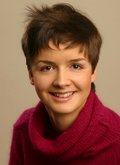
Gschwend, Phil
Professor, Department of Civil and Environmental Engineering, Massachusetts Institute for Technology (MIT), USA, September - December 2004
The overarching goal of our research is to develop means to predict the fates of organic chemicals in natural and engineered environments. To that end, we pursue studies of specific processes controlling compound fates. We emphasize field studies seeking to contrast modeling predictions with observations of the spatio-temporal distributions of organic compounds.
Research in the Gschwend Lab is currently focused on: (a) assessing the role of "black carbon" as a sorbent of organic compounds like PAHs and as a factor limiting those compounds' bioavailability, (b) developing and applying passive samplers suited to quantifying the chemical activities and inter-media gradients controlling transfers of organic compounds, and (c) using computational means to estimate physical chemical properties of synthetic organic compounds, thereby enabling evaluation of their environmental distributions BEFORE large quantities are produced and utilized.
As part of ESI, we are seeking to apply our knowledge of the cycling of xenobiotic organic compounds to anticipate how these substances may act as unwanted "drugs" interfering with the Earth's metabolism.
(taken from the personal web site of Prof. Geschwend at the MIT)

Hyun, Jung-Ho
Professor of Environmental Marine Sciences, Hanyang University, Korea - April 2008
I am running a laboratory of marine microbial ecology and biogeochemistry in the University. In the last years, my students and I have been working on the kinetics and pathways of organic carbon mineralization in the coastal wetlands of Korea. We studied the role of vegetation, bioturbation and tidal flushing in controlling the major C oxidation pathways such as sulfate reduction and Fe(III) reduction. Recently, one of my colleagues in the Korea Ocean R&D Institute (KORDI) discovered gas hydrate in the East Sea. He invited me to examine the biogeochemistry of CH4-oxidation in his project. In methane-rich sediments anaerobic oxidation of methane (AOM) coupled to sulfate reduction is the dominating microbiological pathway, however this process is poorly understood. In collaboration with Antje Boetius’ lab, hosted by Gunter Wegener, I hope that we can elucidate the CH4-biogeochemistry in the East Sea.
Kipry, Judith
Internship July – September 2007
Ich studiere Angewandte Naturwissenschaften an der TU Bergakademie Freiberg im 6. Semester. Im Moment vertiefe ich die naturwissenschaftlichen Grundlagen der Biotechnologie. In meiner Freizeit gehe ich sehr gerne tauchen und interessiere mich somit sehr für die Unterwasserwelt. Im August und September 2007 absolviere ich ein Praktikum in der Habitat Gruppe unter der Betreuung von Friederike Hoffmann.
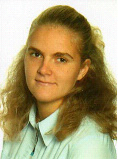
Liang, Lewen
PhD Student, Shanghai Jiao Tong University, China, June 2019 - October 2019
I am a Ph.D. student from Shanghai Jiao Tong University, China, under the supervision of Prof. Fengping Wang. I study the possible link of iron and methane cycles in South China Sea sediment. Sponsored by the “SJTU Overseas Study Grants for Excellent PhD Students”, I spent 5 months in the Habitat group working with Dr. Gunter Wegener. During my stay we tested if well-established anaerobic methane oxidizing communities can switch from sulfate to alternative electron acceptors like iron oxides. We also set up new cultures to test the coupling of methane oxidation and iron reduction. Additionally I learned the CARD-FISH method. Meanwhile, I tested the lipid isotope composition of the cultures working with Kai Hachmann and Dr. Marcus Elvert at the Hinrichs lab at MARUM.
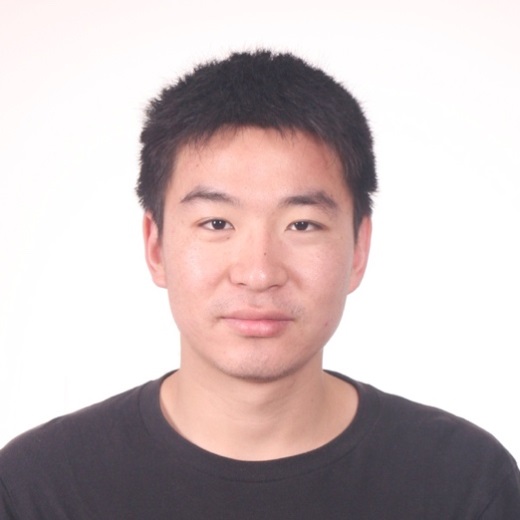
Lloyd, Karen G.
PhD Student, University of North Carolina, Chapel Hill, USA, September 2005
I am a Ph.D. student at the University of North Carolina, Chapel Hill, working with Andreas Teske. I am investigating the anaerobic communities responsible for methane and sulfur cycling in estuarine sediments, methane seeps, and the deep oceanic subsurface. An intergral part of my research will be to quantify and obtain images of anaerobic methane-oxidizing consortia in low biomass sediments. Through a Doctoral Travel Fellowship from the University of North Carolina Center for International Studies, I was able to spend September of 2005 at the Max Planck Institute in Bremen learning how to perform catalyzed reporter deposition in situ fluorescence hybridization (CARD-FISH). I was hosted by both the Molecular Ecology Group led by Rudolf Amann and the Habitat Group led by Antje Boetius, with Katrin Knittel and Tina Loesekann providing day-to-day instruction. Thanks to the great training I received at the MPI, I plan to use CARD-FISH to analyze and quantify anaerobic methane-oxidizing communities in a North Carolina estuary, as well as those that underlie sulfide-oxidizing mats in Gulf of Mexico methane seeps.

Luley, Kathryn
Master Student, Pennsylvania State University, March 2005 – September 2005
I am a Masters Degree student in Dr. Charles Fisher’s Deep-Sea Biology Lab at the Pennsylvania State University. I spent six months at the Max Planck Institute in Bremen working in the Habitat Group led by Antje Boetius. I conducted research for my Masters thesis involving interactions between hydrocarbon seep tubeworms and microbes in the surrounding sediment. These tubeworms require sulfide for energy, which is produced by sulfate reducing bacteria in the sediment. The tubeworms could be ‘farming’ microbes by releasing sulfate from their roots into the sediment. This would provide the tubeworms with a continuous supply of sulfide, allowing them to live for hundreds of years. To investigate this hypothesized relationship, I studied microbial biomass and diversity in the sediment using acridine orange cell counts, FISH and CARD FISH, and in vitro sulfate reduction rates.

Maignien, Lois
PhD Student, Renard Center for Marine Geology, Lab of Microbial Ecology and Technology, Gent University, Belgium, September – November 2005
Within the framework of the EURODOM European project, my thesis aim at studying the microbial ecology and biogeochemistry of carbonate mounds along the European margins. The rationale underlying this research is that these original deep-sea structures, often covered with cold-water corals, might be related to localized hydrocarbon seepage, including methane.
Under the supervision of Prof. Antje Boetius and Dr. Helge Niemann at the Habitat group, and thanks to an excellent cooperation with the technical staff, I learned how to measure turnover rates of anoxic methane oxidation (AOM) and Sulfate Reduction (SR) using radiotracer techniques. These techniques will be key tools to understand the carbonate mound’s genesis and stabilization processes. During my stay, I have also been introduced to several molecular methods in marine microbiology such as cell counting in sediment and FISH/Card-FISH cell staining.
And last, but not least, I could fully benefit from the expertise developed at the MPI through numerous helpful discussions with the staff from the different groups.
My warmest thanks to all of them!
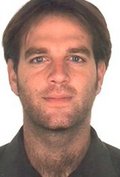
Orcutt, Beth N.
PhD Student, University of Georgia, Department of Marine Sciences, Athens, GA, USA, December 2005 - March 2006
I am a Ph.D. student at the University of Georgia, Athens, GA, USA, working with Dr. Samantha Joye in the Department of Marine Sciences. The central theme of my research is understanding the microbial communities which perform anaerobic oxidation of methane, sulfate reduction and methanogenesis in gassy and/or oily sediments from methane seeps (in the Gulf of Mexico) and the deep biosphere (under Hydrate Ridge). I am using an interdisciplinary approach to do this, combining geochemical analyses, radiotracer measurements of microbial activity, computer modeling, lipid biomarker characterization, and molecular ecological techniques. Supported by a National Science Foundation Graduate Research Fellowship, I have made repeat visits to Bremen to make use of the state-of-the-art technology and expertise in the fields of molecular ecology and lipid biomarkers. My sincerest thanks go to Prof. Antje Boetius, my gracious host; Dr. Katrin Knittel, Tina Loesekann and Viola Beier of the MPI Department of Molecular Ecology for teaching me to FISH and in other aspects of molecular ecology; and Dr. Kai-Uwe Hinrichs, Dr. Marcus Elvert and Julius Lipp of the Research Center Ocean Margins for assistance with lipid biomarker analysis.
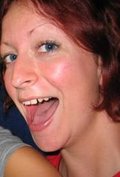
Ramon Luna Vasquez, Gerardo
Master Student, Universidad Nacional Autonoma de Mexico (UNAM) Laboratory of Dr. Elva Escobar - Mexico City, Mexico , October – December 2007
Gerardo Ramon is completing a masters thesis at the National Autonomous University of Mexico (UNAM) as a student of Professor Elva Escobar. His thesis topic concerns the study of the ecology of the holothurian Chiridota heheva, found in the asphalt volcano habitat of the southern Gulf of Mexico, at approximately 3000 meter depth. While his academic interest is in describing the habitat, the diet, and the patterns of distribution of this holothurian species, his work as a guest of the Habitat Group concerned elucidating the microbial communities of various locales within the asphalt volcano area using a DNA fingerprinting technique (ARISA) and the creation of 16S rRNA-based clone libraries. While in Bremen, Gerardo Ramon also cooperated with members of Prof. Gerhard Bohrmann’s laboratory, at the University of Bremen.
(gerardolunav@yahoo.com.mx)
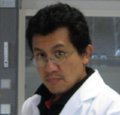
Regmi, Saroj Gopal
Undergraduate Student, Jacobs University Bremen, January 2007
I am an undergraduate student at Jacobs University Bremen, Germany from Nepal majoring in Biology. My interests in microbiology and astrobiology were fostered further by my internship during the Winter break at the Habitat group of Professor Antje Boetius. Under the guidance of Viola Beier, I learned various techniques like DNA extraction from sediments, DNA insert ligation into a vector and bacterial transformation. I will graduate from Jacobs University Bremen in June 2008. I am going to DTU (Technical University Denmark) this summer for an internship on biofilms under the guidance of Professor Søren Molin.

Santos, Luísa
PhD Student, University of Aveiro, Aveiro, Portugal, January – February 2006
I am a Ph.D. student at the University of Aveiro, Portugal where I am working in the laboratories of Maria A. Cunha and Luis M. Pinheiro. Within the framework of the CRUP-ICCI/DAAD Portuguese/German joint research program “Geosphere/Biosphere coupling processes in the Gulf of Cadiz” – (A-15/04; Boetius, Pinheiro), I analysed lipid biomarkers in sediments from submarine mud volcanoes in the Gulf of Cadiz. The aim of this work was to investigate microbial communities related to past and present methane seepage. The work was carried out in Microbial Habitat Group of Antje Boetius and was supervised by Helge Niemann, who gave me an introduction in the theoretical and technical background of lipid analysis and helped me with interpretation of the results.
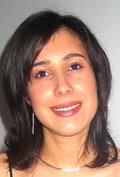
Scilipoti, Stefano
M.Sc. Internship November 2017 - May 2018
I am a guest scientist from Italy, graduated in Environmental Biology from the University of Trieste. I am investigating on the phylogeny of sulfur-oxidizing SUP05, belonging to the Gammaproteobacteria class, through in silico and molecular techniques such as CARD-FISH. This bacterial group doesn't have any cultured representative, although it has been found in different environments such as hydrothermal plumes and oxygen minimum zones, and as symbiont of several marine invertebrate, e.g., deep-sea vent clams and mussels. My goal is to elucidate the role of this clade in hydrothermal vents and plumes systems, focusing on sulfur-oxidation pathways, and to analyze its biogeography.
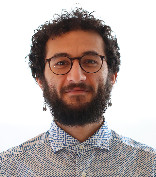
Smith, Craig
Professor of Oceanography, University of Hawaii at Manoa, USA, October 2005 – January 2006
My collaborations at the Max Planck Institute focus on (1) microbial processes on large organic falls (whale, wood and kelp falls) and (2) temperature-substrate limitation of microbial metabolism in high latitude sediments.
It is know well known that whale falls create sulfide-rich reducing habitats at the deep-sea floor, but the rates of sulfate reduction and microbial anaerobic metabolism on lipid-rich whale bones remained poorly known. In collaboration with Antje Boetius, Hans Roy and Frank Wenzhöfer, we are conducting laboratory studies of sulfur, methane and oxygen cycling in microbial assemblages on minke whale bones. We are also using ROV and submersible based photographic surveys to map the development of microbial mats and reducing conditions on whale falls at the deep-sea floor. These studies will provide key insights into the quality and scales of reducing habitats afforded by sunken whales and other large organic falls in deep-sea ecosystems. While at MPI, I also plan to develop collaborative studies with Antje Boetius to test the hypothesis that at very low seawater temperatures, microbial exoenzymes become less efficient, yielding a requirement by heterotrophic bacterial communities for higher concentrations of organic substrates to maintain particular rates of community metabolism and organic-matter oxidation. This hypothesis is supported by our recent studies of Antarctic sediments and merits rigorous testing. If it is correct, climate warming in high latitudes might significantly decrease the carbon storage capacity of shelf sediments and reduce food availability for detritivores, which key components of Antarctic benthic food webs.
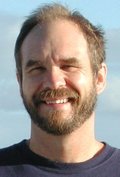
Stegeman, Hanna
Intern, January - February 2020
Under the supervision of Dr. Julia Otte I had the chance to do a four-week internship in the Joint Research Group on Deep-Sea Ecology and Technology, at the MPI for Marine Microbiology in Bremen January-February 2020. She had granted me with the opportunity to work with the manganese nodule samples she collected during her expedition to the Clarion Clipperton Fracture Zone (CCZ) in the tropical NE Pacific in spring 2019. Together we extracted RNA and DNA from the manganese nodules’ surface and made first attempts to enrich the microorganisms (specific: Manganese (Mn(II))-oxidizing Bacteria). It was a chance for me to learn new molecular and microbiological methods which are a part of her ongoing study.
After the completion of my bachelor thesis at the University of Heidelberg in 2019, I wanted to gain more practical experience, specifically in the field of marine biology, since it is my aim to do a master study in this field of biology. For me it was important to get an inside few into actual research, which is even more interesting in the deep sea.
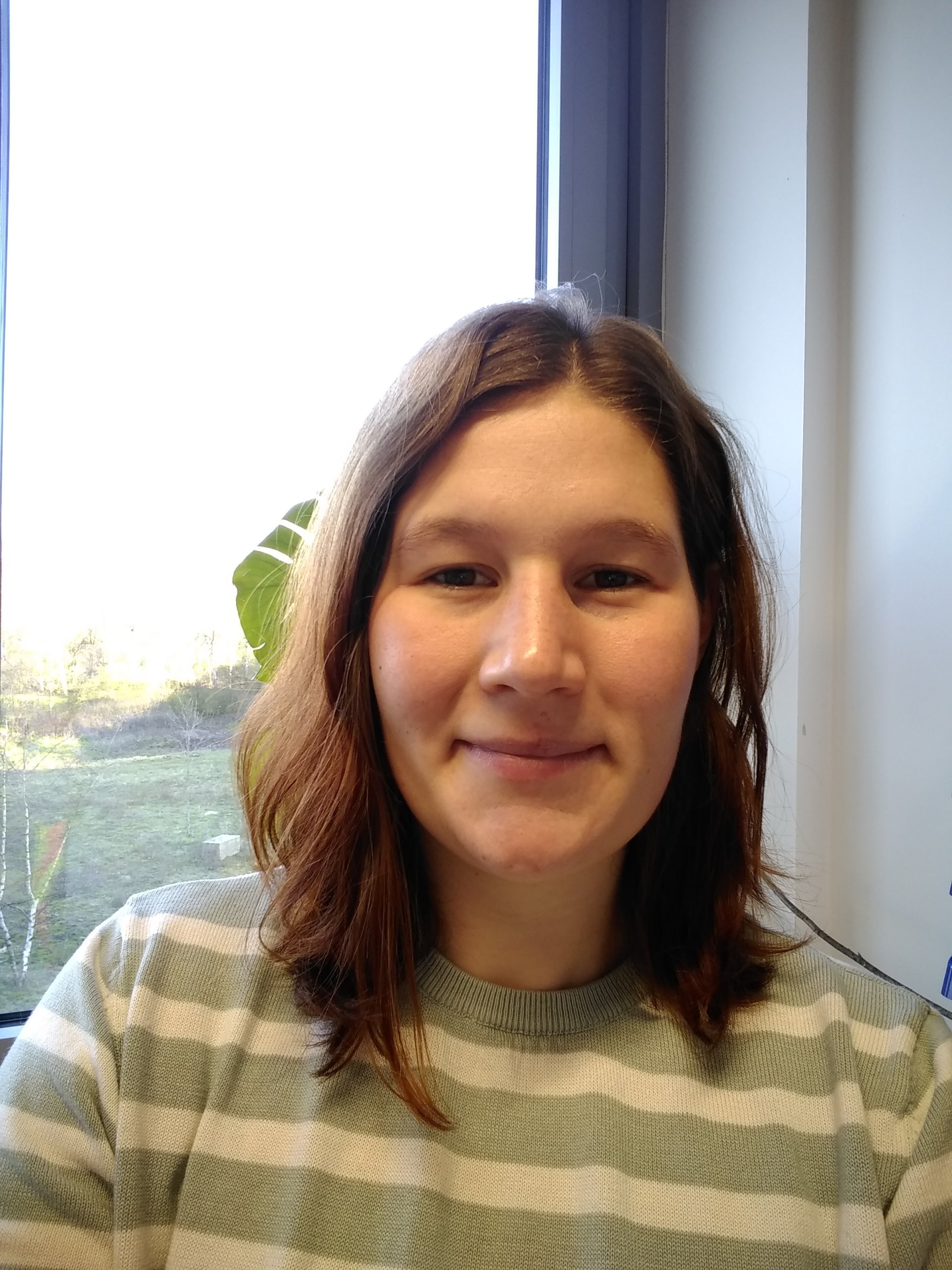
Palacios, Carmen
Scientist, November 2004 - March 2005
I want to continue with the challenge of exploring the biodiversity of unusual ecosystems in order to get more clues on the origin and evolution of life. I am now at the Max Planck Institute for Marine Microbiology (Bremen, Germany) where I have started to study the microbial community composition and functional diversity of a largely unexplored habitat, sunken woods in deep marine water environments, for which I have also got a Marie Curie postdoctoral fellowship starting on May 2005 at the Observatoire Oceanologique de Banyuls (France). Sunken woods are very interesting habitats from an evolutionary point of view. Degradation occurs by specific microbes and animal communities adapted to the use of woods or other high carbon content materials as substrates. It has been suggested that, at least for metazoans, these environments could act as stepping-stones for chemosynthetic communities that inhabit hydrothermal vents and cold seeps. However, nobody has studied the microbial component of sunken wood ecosystems or demonstrated the occurrence of anaerobic microbial communities in them.
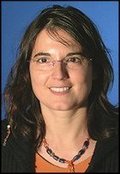
Vazquez, Susana
Scientist at NANOBIOTEC Institute, Faculty of Pharmacy and Biochemistry, University of Buenos Aires-CONICET
June/July 2015, November/December 2016
My research focuses on the study of bacterial communities in soils and sediments from the Antarctic Peninsula, and their response to diesel spills. I also collaborate with Dr. Ulrike Braeckman from Gent University, Belgium, to study the interplay between benthic biodiversity and biogeochemical fluxes in Potter cove sediments influenced by glacier retreat. On my first stay at the MPI I was hosted by Dr. Braeckman (post-doc at MPI at that moment) and I got training on AODC bacterial counts and ARISA fingerprinting methods, which I applied to the first set of samples we obtained during the austral summer in Antarctica in 2015. On my second stay, I worked under the supervision of Dr. Christina Bienhold on the analysis of the second set of samples we obtained from winter and spring seasons, completing a year-round monitoring leading to the comprehension of benthic mineralization in Potter Cove. We found that bacterial numbers were lower in the area closest to the glacier where disturbance from ice growlers and inorganic sediment deposition is highest, and that the bacterial communities in this area were clearly differently structured than the communities further away from the glacier.
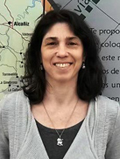
Vulcano, Francesca
Research Assistant, University of Bergen, February 2018
I graduated in molecular biology and genetics at the University of Pavia, in Italy, with a thesis in microbial genetics. Then I did the Erasmus Traineeship in the geomicrobiology lab at the Center for Geobiology, in Bergen, where I am working at the moment as research assistant. My area of research is Loki’s Castle Vent Field, in the Norwegian Sea. So far, I monitored metabolic activity and physical conformation of a consortium of a fermenter isolated from the vent field, and a methanogen, using gas chromatography, FISH and SEM. Recently, I focused on the barite field, hosted in the Loki’s Castle system to understand the extent of microbial-mediated sulfate-reduction, and the taxa involved in this process. I stayed at the MPI for three weeks, as guest in Dr. Gunter Wegener lab, and the aim of my work was to look for anaerobic methane oxidizers that could be possibly coupled to sulfate-reduction, in samples retrieved from some barite chimneys. For this purpose, I learned the CARD-FISH technique to screen the archaeal population, and to identify the possible sulfate-reducing partner.
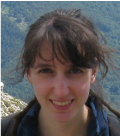
Witt, Verena
Scientist, October 2007-February 2008
In April 2007 I completed my diploma thesis in human genetics on the nuclear topology of ultra-conserved non-coding sequences (UCS) in embryos of mouse and chicken models, at the Ludwig-Maximilians-University in Munich, Germany. Previously, I applied the techniques of RNA in situ hybridization (RNAISH), DNA-FISH, M-FISH and fluorescence-, as well as confocal laser scanning microscopy. Due to my passion for diving, I discovered my strong interest in marine sciences. Since June 2007 I am a member of the research group of Dr. Christian Wild, GeoBio-Center LMU Munich, working on warm-water coral exudates. During my internship at the MPI I will be assisting Sandra Schöttner with her PhD thesis project concerning microbial ecology of cold-water coral ecosystems. Under the supervision of Dr. Alban Ramette I will extract DNA from deep-sea corals, learn ARISA, cloning, sequencing and CARD-FISH.